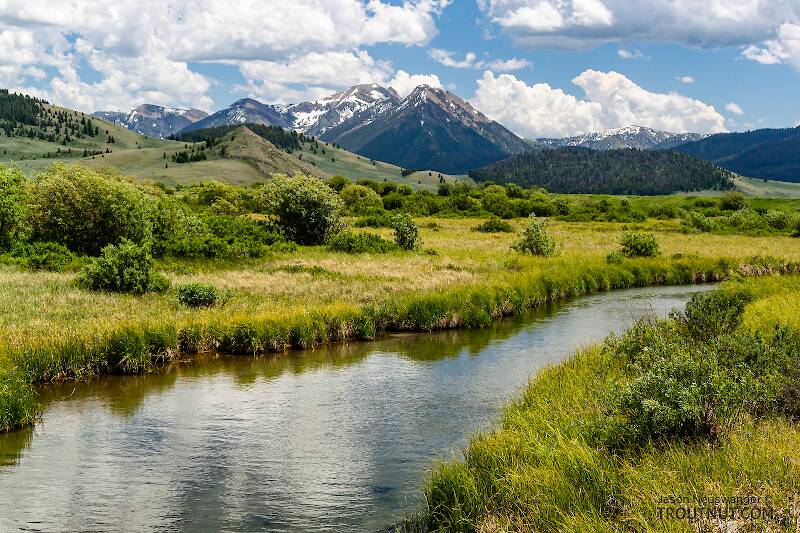
Blue-winged Olives
Baetis
Tiny Baetis mayflies are perhaps the most commonly encountered and imitated by anglers on all American trout streams due to their great abundance, widespread distribution, and trout-friendly emergence habits.


Stonefly Species Allocapnia granulata (Little Snowflies)
Where & when
This is the most abundant eastern member of the Capniidae family.In 119 records from GBIF, adults of this species have mostly been collected during February (26%), January (24%), March (24%), December (12%), and April (11%).
In 6 records from GBIF, this species has been collected at elevations ranging from 125 to 3593 ft, with an average (median) of 2690 ft.
Species Range
Physical description
Most physical descriptions on Troutnut are direct or slightly edited quotes from the original scientific sources describing or updating the species, although there may be errors in copying them to this website. Such descriptions aren't always definitive, because species often turn out to be more variable than the original describers observed. In some cases, only a single specimen was described! However, they are useful starting points.
Description from GBIFthe Global Biodiversity Information Facility
Source: The Winter Stoneflies (Plecoptera: Capniidae) Of Mississippi
Male tergal process. Tergum 8 process deeply notched in dorsal aspect, forming a pair of elongate knobs in V-shaped pattern (Fig. 14); knobs armed with scale-like tubercles and an additional small, hairy scale-less knob is located behind larger scaled knobs. In lateral aspect, scaled knobs are low at anterior margin and are slanted upward toward projecting, hairy, posterior knobs (Fig. 15).
Female subgenital plate. Abdominal sternum 8 bears a slightly projecting median plate with low mesal point and base constricted by small lateral notches (Figs. 16, 60). Sterna 7 and 8 completely separated by membrane.
Source: New Records Of Winter Stoneflies (Plecoptera: Capniidae) In Mississippi
Discussions of Allocapnia granulata
Thanks
Start a Discussion of Allocapnia granulata
References
- Swisher, Doug and Carl Richards. 2000. Selective Trout. The Lyons Press.
Stonefly Species Allocapnia granulata (Little Snowflies)
Species Range
Common Names
Resources
- NatureServe
- Integrated Taxonomic Information System
- Global Biodiversity Information Facility
- Described by Claassen, P.W. (1924) New species of North American Capniidae (Plecoptera). The Canadian Entomologist 56, 43–48.

